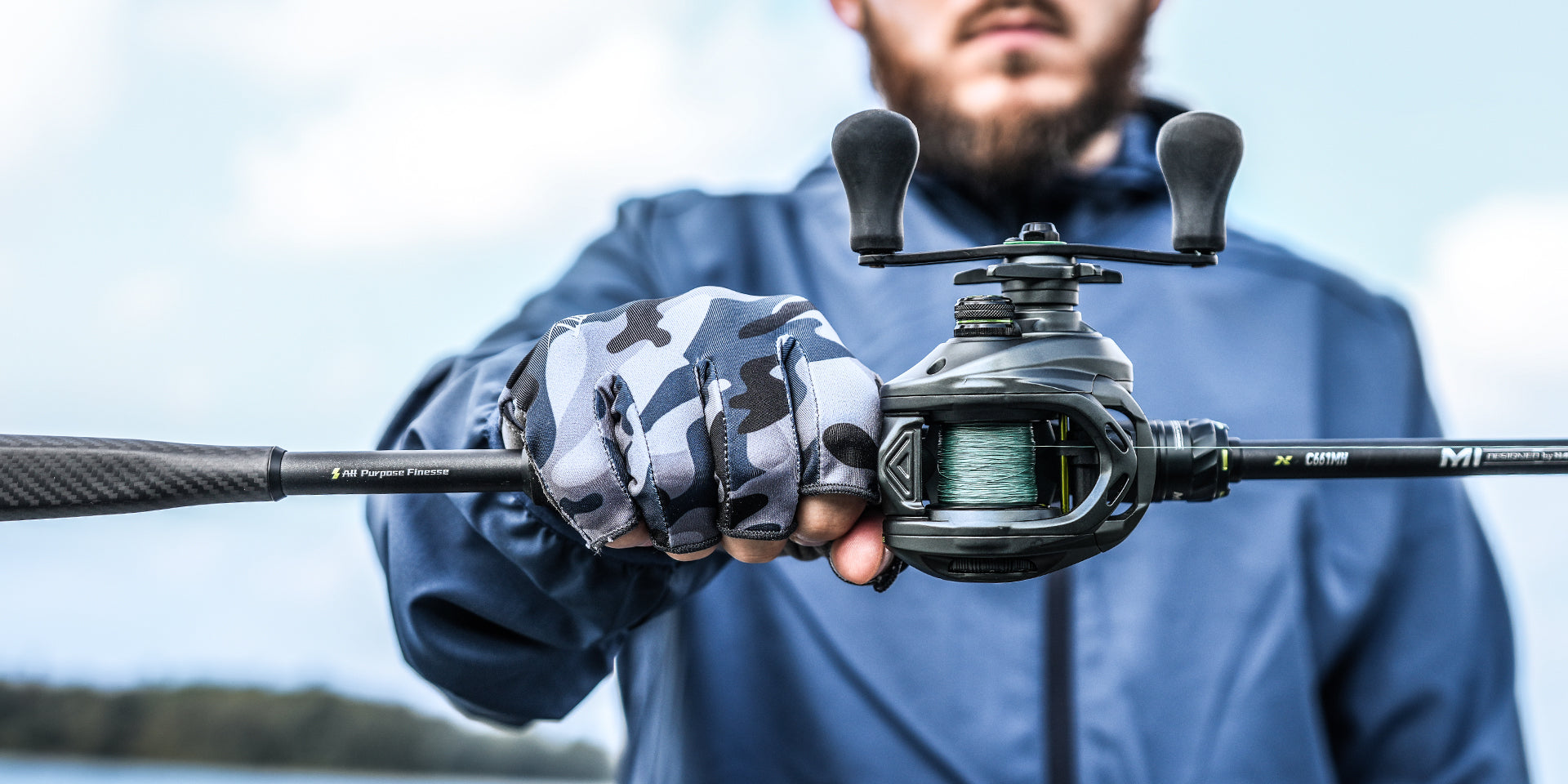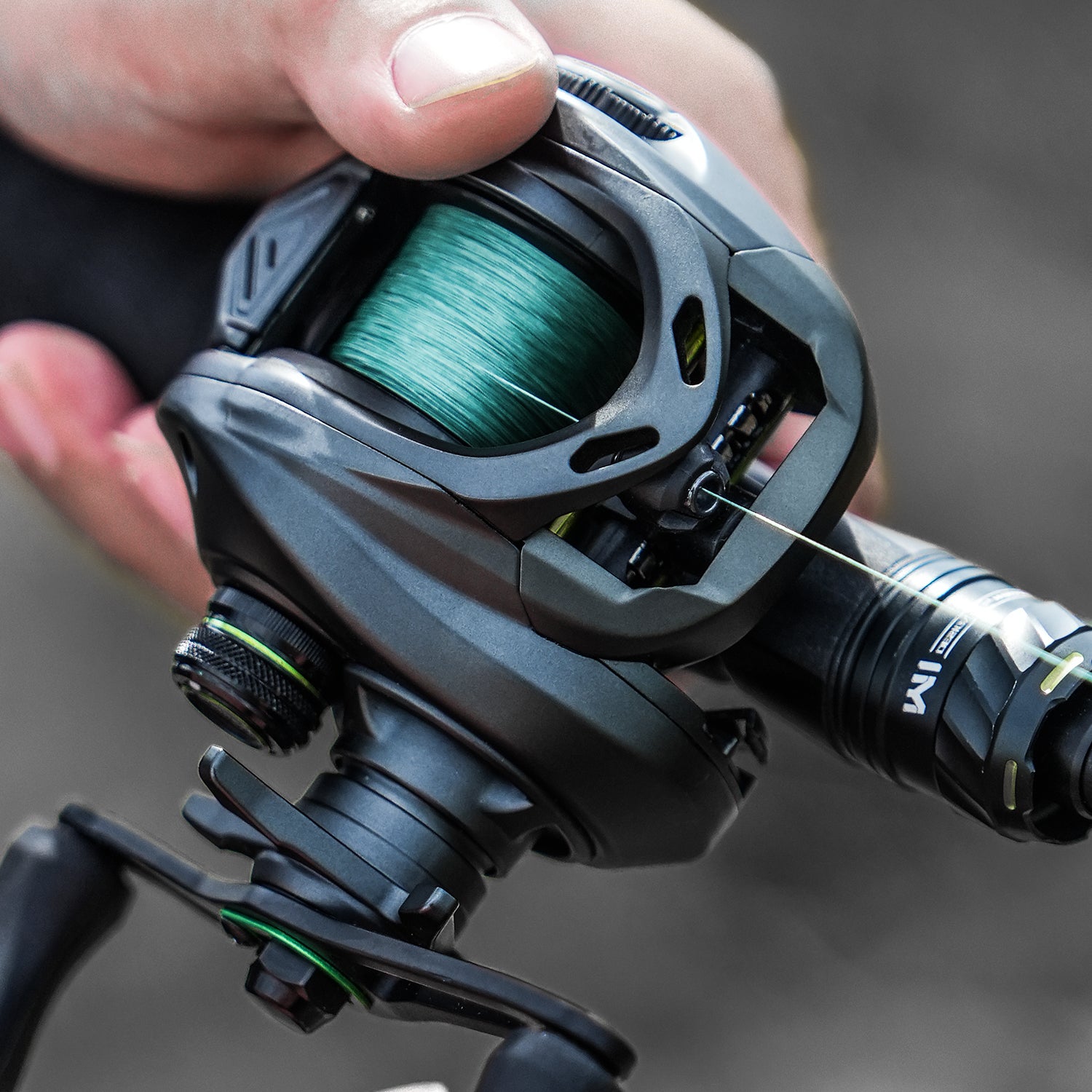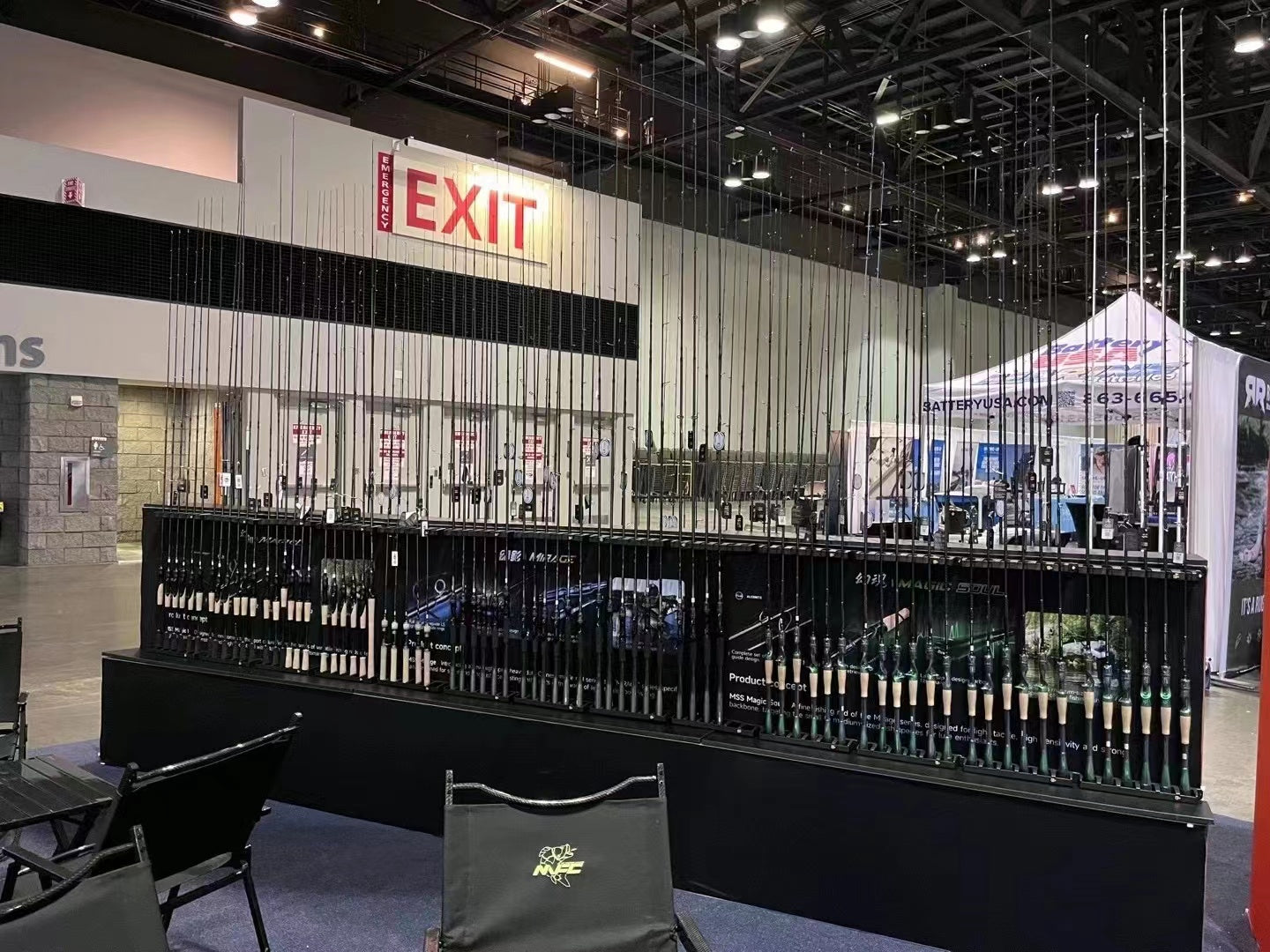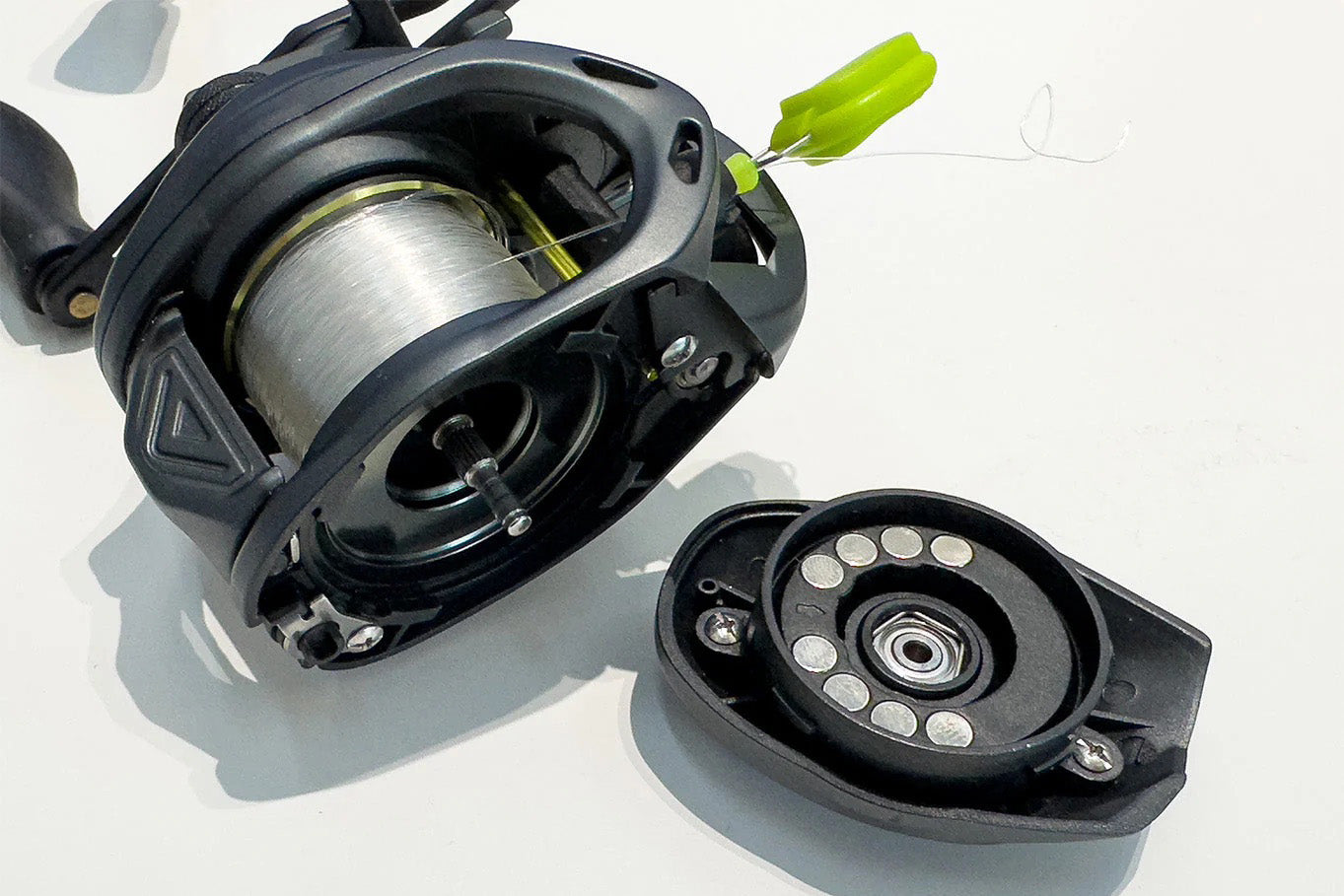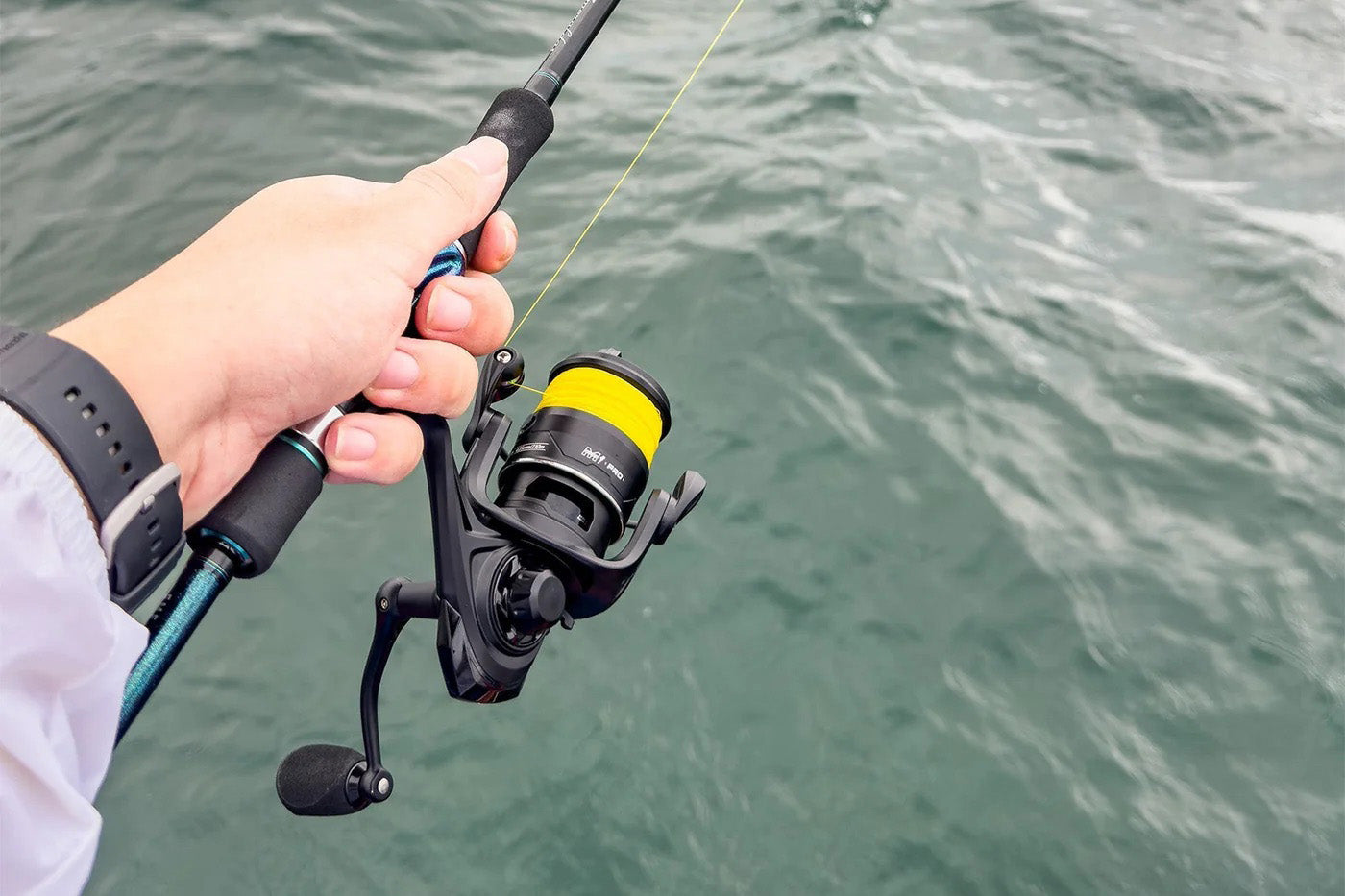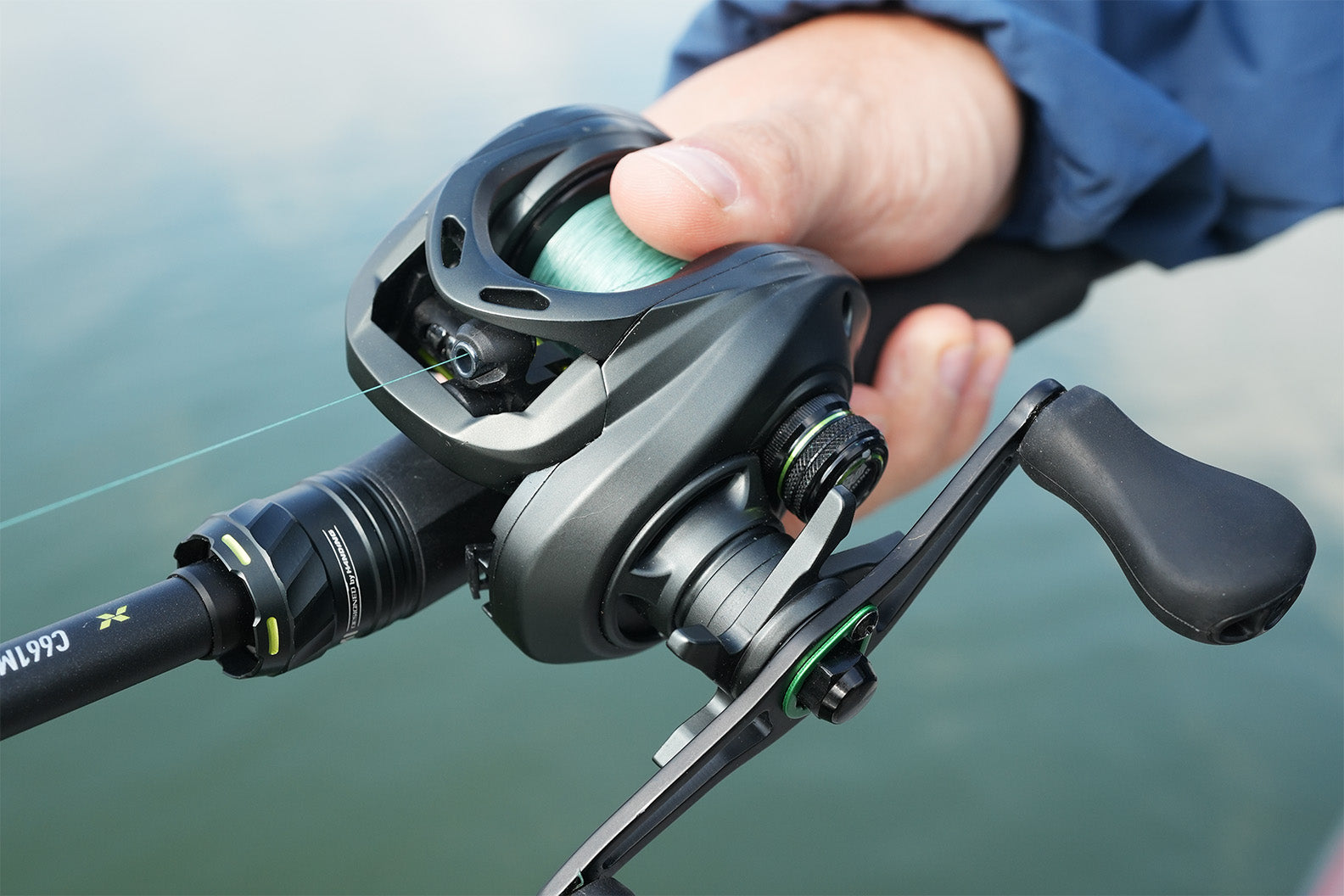That awful feeling when your baitcaster explodes into a bird's nest can wreck a great day of fishing. The right brake system helps prevent these frustrating tangles. Today's fishing reels usually have one of two brake types: magnetic or centrifugal. Knowing how these systems work isn't just about the technical stuff – it's key to a smooth baitcasting technique that lets you fish more and untangle line less.

The Science Behind Baitcasting Reel Brakes
When you're casting lures with a baitcaster, the spool spins super fast to let out line. But if you're not careful, the spool can spin much faster than your lure is flying, and then you get a backlash. That's where brakes come in – they help control the spool's speed during the cast.
Brakes Help You Cast More Accurately
Think of brake systems as a safety net for your casts. They add enough drag to keep the spool from spinning out of control but still allow the line to go out smoothly toward your target. As your lure slows down in the air, the brakes kick in and stop the spool from over-spinning.

How Stopping Power Works
Basically, when you cast, the spool builds up a lot of spinning energy. This energy needs to be reduced gradually as the lure slows down. Without brakes, you'd have to control the spool perfectly with your thumb the entire time – which is hard to do.
Most baitcasting reels have either magnetic brakes, centrifugal brakes, or sometimes a combination of both. The type of brake system you choose can affect how easy the reel is to cast and how quickly you learn.
Magnetic Brakes: The Power of Attraction
Magnetic systems use magnets placed near the metal spool to create resistance. The closer the magnets are, the more they slow the spool down. Usually, you can adjust these systems with a dial on the outside of the reel without taking the reel apart.
Centrifugal Brakes: Pins in Action
Centrifugal systems use small pins or shoes that move outward during the cast due to the spinning motion. These pins rub against a brake ring, which creates friction and slows the spool. The number of pins engaged determines how much braking power you have.
Magnetic Brakes – The User-Friendly Option
How Magnetic Brakes Work
Magnetic brakes are pretty simple. When metal moves through a magnetic field, it creates resistance. In baitcasting reels, magnets are placed close to the metal spool to make this resistance. As the spool spins fast, the magnetic field creates a brake. The faster the spool spins, the more braking power you get.
What's great about this system is that it's consistent and you can adjust it easily. Most magnetic brakes have a numbered dial (usually from 0 to 10). This lets you fine-tune the braking without having to open up the side of the reel.
Why Magnetic Brakes Are Good
Magnetic brakes are great in a few ways:
- Easy Adjustments: It is simple to change the brake setting between casts using an exterior dial. This is wonderful when you're changing among different lures.
- Reliable Braking: They brake smoothly and consistently throughout your cast.
- Simple to Maintain: Because there aren't any moving parts, they basically last forever and don't need much care.
- Ideal for Novices: The consistent braking helps new anglers who might not have their timing down perfectly.
For beginners looking for their first fishing reel, baitcasters with magnetic brakes are often the recommended starting point.
Limitations to Keep in Mind
They're wonderful, but magnetic brakes do have a few limitations:
The constant braking may limit how far you can cast, especially with small lures. As the magnetic force is always the same when casting, it could slow down the spool too much at the very end.
And, just winds its way around magnetic brakes. You're going to have totally different casts into the wind than when the wind is behind you. So you're going to be doing a whole lot of brake work as the wind changes.
Centrifugal Brakes – The Distance Champion
How Centrifugal Brakes Function
Centrifugal brakes use friction, not magnets. Inside the reel, there are little plastic pins (or shoes) that move. They're attached to the spool shaft. When you cast, the force of the spin pushes these pins outward. They then rub against a brake ring, which slows down the spool.
What's cool is that as the spool naturally slows down during your cast, the spinning force decreases. This makes the pins pull back a little, so there's less braking. So, you get the most braking at the beginning of the cast, when you really need it. The strategic arrangement in centrifugal brakes for fishing reels directly impacts casting performance and control.
Why Centrifugal Brakes Are Great
Centrifugal brakes have some big advantages for a lot of fishermen:
- Cast Farther: The braking power decreases as you cast, which lets the spool keep spinning longer and get you more distance.
- Good in the Wind: They still work well, even when it's windy out.
- Lots of Control: You can really fine-tune them by choosing exactly which pins are active.
- Feels More Natural: The way the braking decreases is similar to how good fishermen control the spool with their thumb.
Noteworthy Disadvantages
The good things about centrifugal brakes come with a few downsides:
You have to open up the side of the reel to adjust them, which you can't do quickly while you're fishing. This means you need to think ahead about the conditions and set your brakes before you start.
Also, because they're mechanical, they need more maintenance. The brake pins can wear down or get dirty, so you'll have to clean and check them every so often.
For beginners, they can be a little trickier to use. The braking isn't consistent, so your timing has to be better. It can take some practice to get the hang of it.

Choosing the Right Brakes for Your Fishing
Lure Weight Matters
The weight of your lure makes a big difference in what kind of brakes work best.
- Light Lures: If you're using light lures (less than 1/4 oz), magnetic brakes are usually better. They give you steady control during the whole cast, which keeps the spool from spinning too fast for the lure.
- Medium to Heavy Lures: For heavier lures (3/8 oz and up), centrifugal brakes often shine. These lures have enough power to get past the initial braking, and then the decreasing resistance lets you cast farther.
What About the Weather and Where You're Fishing?
Don't forget to think about the conditions:
- Windy Days: Centrifugal brakes are great in the wind because they keep working well no matter which way the wind is blowing. The wind doesn't affect them as much.
- Tight Spots: If you're fishing in tight spots (like around docks or in creeks), magnetic brakes are a good choice. They give you the control you need when accuracy is more important than distance.
Fine-Tuning Your Brake System
To really nail your baitcasting, you gotta set your brakes right. Start with the brakes cranked all the way up, then ease them off bit by bit. You're looking for that sweet spot where you can cast without getting a bird's nest (backlash), but you're still getting good distance.
Don't forget about the spool tension knob. It works with your brake system. You want to adjust it so your lure drops slowly when you flip the clutch. If it's too tight, you won't cast as far. Too loose, and even great brakes can't stop a backlash.
Setting the Brakes:
- Magnetic Brakes: Start with the setting all the way up (usually 10), then lower it one notch at a time until your casts are smooth.
- Centrifugal Brakes: Start with all the pins pushed in (engaged). Then, start popping them out one by one until you find what works best.
Line Matters!
The type of line you use makes a difference in brake settings:
- Monofilament: This line stretches, so it's more forgiving. You can usually get away with lighter brake settings.
- Fluorocarbon: This line is stiffer and holds its shape more. You'll probably need heavier brake settings.
- Braided Line: Braid barely stretches and has very little friction. This often means you need to use more aggressive braking.

Master Your Casts
The best brake setup is your choice based on how experienced you are, the kind of fishing you want to do, and where you fish most. Magnetic brakes are best suited for novices or people seeking a predictable performance. Centrifugal brakes can give veterans more distance. Instead of settling into one or the other, buy both when you go shopping for fishing reels. Just remember, however, that practice is the key. Even with the perfect brake setting, there is no replacement for getting on the water and practicing your method.


